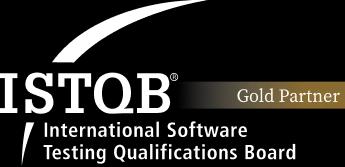
What is Blended Learning? An Overview of the Blended Learning Method
In this era of rapid technological development, traditional education methods are no longer sufficient to meet the diverse and flexible learning needs of students. Thus, Blended Learning also known as hybrid learning has emerged as a solution that combines the advantages of both online and face-to-face learning. This method offers a comprehensive learning experience, optimizing interaction and enhancing educational outcomes. So, what exactly is Blended Learning, and why is it becoming increasingly popular? Let’s explore in the article below.
I. What is Blended Learning?
Blended learning, also known as hybrid learning, is an educational method that combines online learning (E-learning) with in-person learning. Instead of relying solely on one form like traditional classrooms or fully online learning blended learning integrates both to create a more flexible and effective learning experience. This method leverages the advantages of both online and face-to-face environments, optimizing the learning process.

Blended learning uses digital tools such as Learning Management Systems (LMS) and online lectures, combined with traditional classrooms, to provide diverse approaches to knowledge acquisition. As a result, learners can gain knowledge comprehensively, from self-paced online learning to direct interaction with instructors for reinforcing and expanding their understanding.
This approach not only improves teaching quality but also meets the diverse learning needs in today’s digitized education era.
II. Benefits and Challenges of Blended Learning
1. Benefits of Blended Learning
The blended learning method offers significant advantages over traditional or entirely online learning. By combining the strengths of both formats, blended learning improves educational effectiveness, enhances flexibility, and personalizes the learning experience.
1.1 Enhances Self-Directed Learning and Time Management
Blended learning encourages students to research independently through online resources. Without the constraint of classroom time, learners can decide when and how fast they study, based on their personal preferences. This not only helps them develop self-directed learning skills but also improves time management, laying the foundation for lifelong learning.

1.2 Increases Interaction
This method integrates both direct and online communication, offering students more opportunities to exchange ideas, discuss, and practice skills. In face-to-face classes, students can interact with instructors and peers, while online tools or discussion forums allow them to continue exchanging ideas even outside the classroom. This not only strengthens engagement but also enables learners to approach knowledge from various perspectives.
1.3 Personalizes Learning
Everyone learns at different paces and styles. To meet the learning needs of each individual, the blended learning method allows students to adjust to their own pace. Learners can self-study by accessing online materials in advance to grasp theoretical concepts. Then, they can join discussions or solve practical problems in face-to-face classes. This helps students gain a deeper understanding of the subject, thereby improving learning outcomes.

1.4 Cost-Effective
For organizations and businesses, blended learning is an economical solution. It reduces costs related to infrastructure, rooms, or equipment, while still maintaining teaching quality through technology support. For learners, it saves travel costs and study materials while providing access to high-quality courses.
1.5 Optimizes Learning Time
Blended learning optimizes the time spent on in-class activities. Instead of using classroom time to cover theoretical content, students can learn theory through online lectures beforehand and use class time for discussions, Q&A, and hands-on practice. This enhances interaction and the effectiveness of face-to-face sessions while minimizing time spent on self-learnable content.
1.6 Improves Learning Outcomes
Blended learning has been proven to improve learning effectiveness. By combining online and in-person learning, students can access information from multiple angles, allowing for a deeper understanding of the content and the ability to apply knowledge in practice. Moreover, students gain access to supporting tools such as online quizzes, practical exercises, and reference materials, helping them reinforce their knowledge and achieve better academic results.

Thanks to these outstanding benefits, blended learning is becoming a popular trend and the preferred choice for many educational institutions and businesses worldwide.
2. Challenges of Blended Learning
While blended learning offers numerous significant benefits, it also presents certain challenges that must be addressed to ensure the effectiveness of the teaching and learning process.
2.1 Requires Self-discipline and Time Management Skills
Blended learning requires learners to have a high degree of self-discipline and good time management skills. Since a large part of the learning process occurs online and independently, students need to plan their studies and complete tasks on time without regular supervision from instructors. For those lacking in self-study skills or struggling to maintain discipline, progress may slow, leading to reduced learning effectiveness.

2.2 Technological Infrastructure Requirements
Blended learning heavily relies on technology, from learning management systems (LMS) to online teaching software. This requires both learners and instructors to have access to the right technological equipment and a stable internet connection. For those living in areas with limited technological infrastructure or without access to the necessary tools to participate in online learning, involvement in blended learning may face numerous barriers. This creates an imbalance in learning opportunities.
2.3 Teaching Quality Challenges
The quality of teaching in blended learning can be inconsistent if instructors are unfamiliar with technology tools or do not know how to optimize the integration of in-person and online instruction. Transitioning from traditional teaching methods to blended learning requires educators to have strong technology skills and appropriate pedagogical approaches. Without proper training, instructors may struggle to create engaging and effective lessons.

2.4 Time and Cost for Implementation
Implementing a blended learning program requires not only technological infrastructure but also significant initial time and financial investment. Educational institutions and businesses need to invest in online learning systems, develop course content, and train instructors to proficiently use technology tools. This process can be lengthy and resource-intensive, particularly for large organizations or those lacking an existing support system.
2.5 Difficulty in Assessing Learning Outcomes
Evaluating learners in a blended learning model can be more complex than in traditional teaching methods. Online assessments sometimes do not fully measure a learner’s abilities, and there is a risk of cheating when there is no direct supervision. Additionally, combining online and in-person learning requires instructors to develop more flexible and comprehensive assessment methods that accurately reflect each individual’s learning outcomes.
III. Popular Blended Learning Models
Blended learning goes beyond merely combining online and face-to-face instruction. It encompasses various models to meet the specific needs of different learners and industries. Below are some of the most common models:
1. Rotation Model
In this model, learners rotate between online and in-person activities according to a set schedule. This ensures that students can access knowledge from multiple sources and in diverse ways.
2. Flex Model
The Flex model emphasizes online learning, where learners autonomously study through online platforms. Instructors provide support and guidance as needed, mainly through in-person meetings or online consultations.
3. Online Lab Model
This model combines online learning with in-lab sessions. Learners study online in a lab setting with support from instructors or mentors.

4. Self-blend Model
In the Self-blend model, learners can choose additional online courses to complement their main curriculum. This allows students to enhance their professional skills or explore new fields of interest.
5. Online Driver Model
In the Online Driver model, the entire learning process takes place on online platforms without requiring in-person interaction between instructors and learners. Instructors communicate with students through online tools such as video calls, emails, discussion forums, or LMS.
6. Face-to-face Driver Model
The Face-to-face Driver model relies primarily on traditional teaching methods, where instructors directly guide learners in the classroom. However, information technology is integrated to provide learning materials, practice exercises, and online assessments. This allows learners to study in class while also accessing supplementary materials and completing assignments after class, optimizing learning efficiency and enhancing self-study skills.

7. Flipped Classroom Model
In this model, learners study theoretical knowledge through online materials first, and then come to class for practice and discussions with instructors. This optimizes classroom time and enhances interaction between instructors and learners.
IV. Implementing Blended Learning in Workforce Training
Blended learning is increasingly popular, and implementing it in workforce training requires careful planning. To deploy blended learning effectively, several steps should be followed:
- Assess Training Needs: Before implementation, businesses need to thoroughly assess employee training needs and identify the required skills.
- Choose an Appropriate Model: Depending on the nature of the work and the number of employees, businesses can choose a suitable blended learning model. For instance, for large organizations, the Rotation or Flex models might be optimal choices.
- Develop Learning Content: The content should be designed to suit both online and in-person learning, ensuring interactivity and practical relevance.
- Train Instructors: For blended learning to succeed, instructors must be equipped with technology skills and online teaching methodologies.
- Evaluate and Adjust: After implementation, it is essential to evaluate the training program’s effectiveness and make necessary adjustments.
V. Conclusion
Blended learning is not just a trend in education but an optimal solution for enhancing the quality of learning and training. With the advancement of technology and the increasing need for flexibility among learners, this hybrid learning method is expected to become a widely adopted choice in the future. However, for blended learning to be implemented effectively, careful preparation is required in terms of technological infrastructure, training content, and instructor skills.
This concludes the overview of blended learning that Tokyo Tech Lab wanted to share with you. We hope this article has provided you with valuable insights. Follow us for more useful information!
Read more articles:
SHARE THIS ARTICLE
Author
Huyen TrangSEO & Marketing at Tokyo Tech Lab
Hello! I'm Huyen Trang, a marketing expert in the IT field with over 5 years of experience. Through my professional knowledge and hands-on experience, I always strive to provide our readers with valuable information about the IT industry.
More Posts



About Tokyo Tech Lab
Services and Solutions
Contact us
© 2023 Tokyo Tech Lab. All Rights Reserved.







